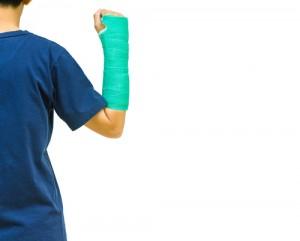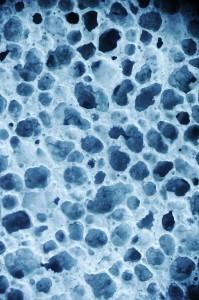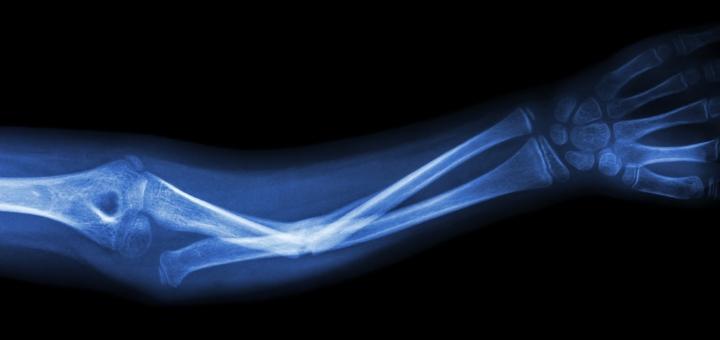 One of the health applications of 3D printing most often discussed is the manufacturing of bespoke scaffolds that could be used to mend broken bones. It is a promising idea, but one that has been held back by the difficulties in printing materials that are strong, flexible and can encourage the regrowth of healthy bone in the same way as current methods, such as bone grafts.
One of the health applications of 3D printing most often discussed is the manufacturing of bespoke scaffolds that could be used to mend broken bones. It is a promising idea, but one that has been held back by the difficulties in printing materials that are strong, flexible and can encourage the regrowth of healthy bone in the same way as current methods, such as bone grafts.
One material being investigated for making these 3D-printed scaffolds is calcium phosphate – after all it is a primary constituent of naturally-formed bone. The problem however is that current 3D printing methods to make calcium phosphate scaffolds require the use of high temperatures. Such temperatures make it impossible important drugs which can stimulate bone growth, antibiotics to prevent infections, or even living cells to the scaffolds.
At the moment, calcium phosphate powder is temporarily bound using an acidic binder chemical – typically phosphoric acid – and then permanently fused together by sintering. Aside from the temperature issue, scaffolds made in this way sometimes retain unwanted binder residues, while during sintering, parts shrink – sometimes in an uneven way – that can cause cracking.
 Now, researchers in the U.S. have developed a new way of printing in calcium phosphate that can be done at relatively low temperatures which results in a scaffold that is mechanically strong, biologically compatible with human bone and stays close to the original dimensions of the design being used.
Now, researchers in the U.S. have developed a new way of printing in calcium phosphate that can be done at relatively low temperatures which results in a scaffold that is mechanically strong, biologically compatible with human bone and stays close to the original dimensions of the design being used.
Their approach relies on adding collagen to the phosphoric acid binder solution to create a composite material with the calcium phosphate, they report in the journal Biomaterials. Collagen is the most abundant structural protein in the body and is a critical component of bone, adding to its strength and toughness. The team – from the University of Rochester, Alfred University and the University of California San Diego – also added a surfactant to the mix to improve the printability of the material.
They printed scaffolds using the composite material on an adapted 3D Systems’ ZPrinter 450 and subjected them to a series of laboratory tests. They found the collagen composite scaffolds were tougher than those made using calcium phosphate alone, and were also better at encouraging the growth of living cells. Moreover, the improved scaffolds were as effective in bridging bone defects in animal models as regular bone grafts, but in common with prior studies of 3D printed scaffolds, were unable to stimulate complete healing.
The researchers suggest their findings add further evidence for the idea that 3D printed scaffolds must be used alongside bone growth factors for cells to help induce new bone formation.
“Inkjet printing of collagen solutions with high resolution has not been previously utilized in 3D printing of calcium phosphates,” they write. “This study demonstrates the feasibility of these processes and the mechanical and cellular benefits of … collagen inclusion.”
Let’s hear your opinion on this process in the 3D printed bone graft forum thread on 3DPB.com.
Subscribe to Our Email Newsletter
Stay up-to-date on all the latest news from the 3D printing industry and receive information and offers from third party vendors.
You May Also Like
Gorilla Sports GE’s First 3D Printed Titanium Cast
How do you help a gorilla with a broken arm? Sounds like the start of a bad joke a zookeeper might tell, but it’s an actual dilemma recently faced by...
Nylon 3D Printed Parts Made More Functional with Coatings & Colors
Parts 3D printed from polyamide (PA, Nylon) 12 using powder bed fusion (PBF) are a mainstay in the additive manufacturing (AM) industry. While post-finishing processes have improved the porosity of...
$25M to Back Sintavia’s Largest Expansion of Metal 3D Printing Capacity Since 2019
Sintavia, the digital manufacturing company specializing in mission-critical parts for strategic sectors, announced a $25 million investment to increase its production capacity, the largest expansion to its operations since 2019....
Velo3D Initiates Public Offering in a Bid to Strengthen Financial Foundations and Drive Future Growth
Velo3D (NYSE: VLD) has been among a number of publicly traded 3D printing firms that have attempted to weather the current macroeconomic climate. After posting a challenging financial report for 2023,...
































